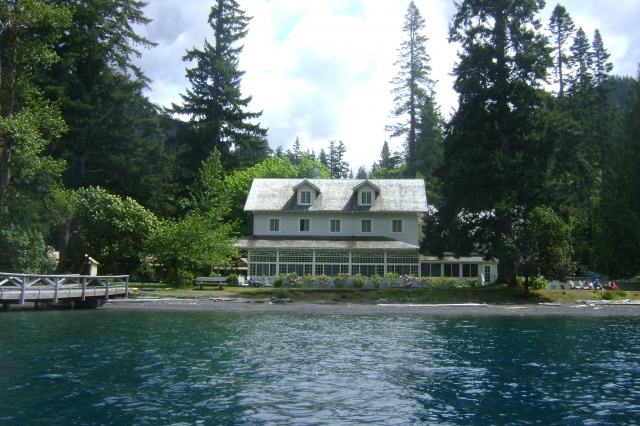Home > The Lady of the Lake: A ghost story
The Lady of the Lake: A ghost story

Saponify: to convert a fat into soap by treating with an alkali
Thankfully, few of us know much about the process of saponification. A pair of fishermen in 1940 found out the hard way that when a human body is exposed to sufficient amounts of alkali and pressure, and refrigerated to prevent decay, naturally occurring fat turns into a soap-like substance. When they noticed a woman’s body (recognizably female and wearing slightly outdated clothes) bobbing on the surface of Lake Crescent, the flesh slipped and oozed off like soap as they wrestled her to shore.
Thus began the legend of the Lady of the Lake. Fast forward 72 years. After a long few months leading up to the release of Blood and Whiskey, the second book in The Cowboy and Vampire Thriller Series, we decided to take a week off and booked a cabin at Lake Crescent in Washington’s Olympic Peninsula. The Olympic National Park is a vast swath of wilderness about as far north and west as you can get in the lower 48 with mossy, old growth rain forests, the soaring, snow-capped peaks of the Olympic Mountains, an amazing stretch of rocky, undeveloped coastline, milky blue glacier-fed rivers and a series of historic lodges.
We stayed at Crescent Lodge, a turn-of-the-century building with a delightful solarium, dusty, glassy-eyed elk heads on the walls and, naturally, ghosts. During the 1920s and perhaps beyond, the Singer Tavern, as the lodge was then known, served double duty as a house of ill repute. Like any good creaky, historic and now-defunct brothel, it has its share of spirits unwilling to leave this mortal plane.
One such spirit is the Lady of the Lake. Her real name was Hallie Illingworth and she was a rough-around-the-edges beauty, a waitress at the tavern and married (the third time was not a charm) to a louse. He was a beer truck driver and incorrigible ladies man, even after marrying her, and they were prone to violent arguments and fist fights – with each other or other inhabitants of the bar. She disappeared one cold night in December, not to be seen again for four years.
That’s when her saponified corpse popped up out of the icy depths of Lake Crescent — 600 feet straight down in some places — and into the local legend. She had been bound in rope to which weights had been affixed. Her husband was convicted and served his time unremarkably. She, poor soul, continues to mope about the lodge much to the terrified delight of guests and staff.
On a tour of the building, our guide told us one of the newbies heard her clattering up and down the stairs in the wee hours just the night before. Other staff spoke of lights flickering, doors banging shut and music suddenly getting louder in the lounge. She had a reputation for hard drinking, so that makes sense. Others had seen her, or knew someone who had seen her, drifting along the shore and over the water, glowing in the darkness, pale and translucent and a little bit sudsy.
Sadly, we had no paranormal experiences save for an otherworldly stiffness inhabiting our bodies after a night on those historic mattresses. We did take a canoe across the lake to the vicinity where her body was found and stared down into the blue-green depths, half expecting to see her just under the surface of water — so cold, so deep, and so high in alkali sluiced off the steep peaks surrounding the lake. But we only saw two trout. And an eagle. And later a purple butterfly that landed on Kathleen’s toe. But no ghosts.
It was too sunny for ghosts during the day, and we were far too tired for much to wake us up at night. The canoeing and hiking left us sleeping like the dead. Still, we felt her as we walked the trails around the lake where she died, felt her sorrow in the waters she haunted and felt the sadness that still haunted her all those years later.
